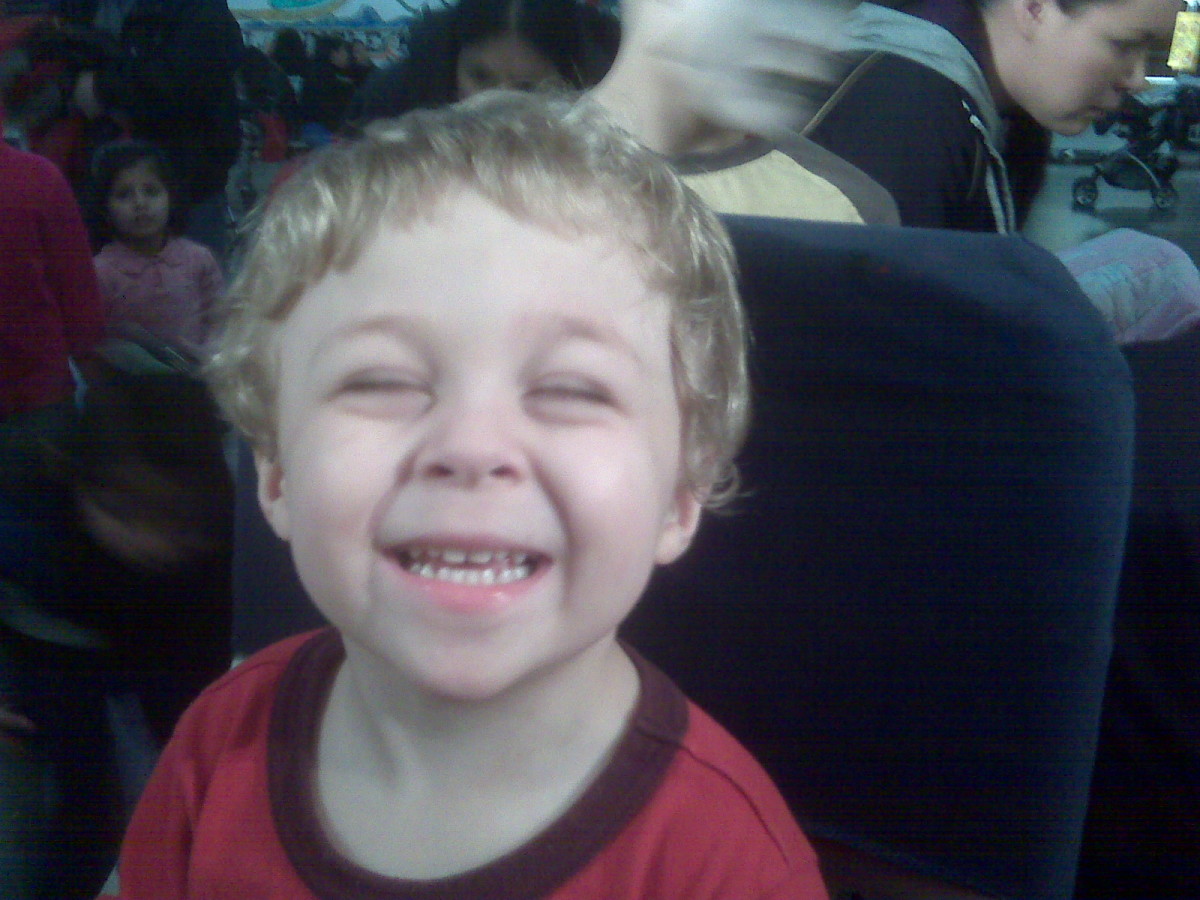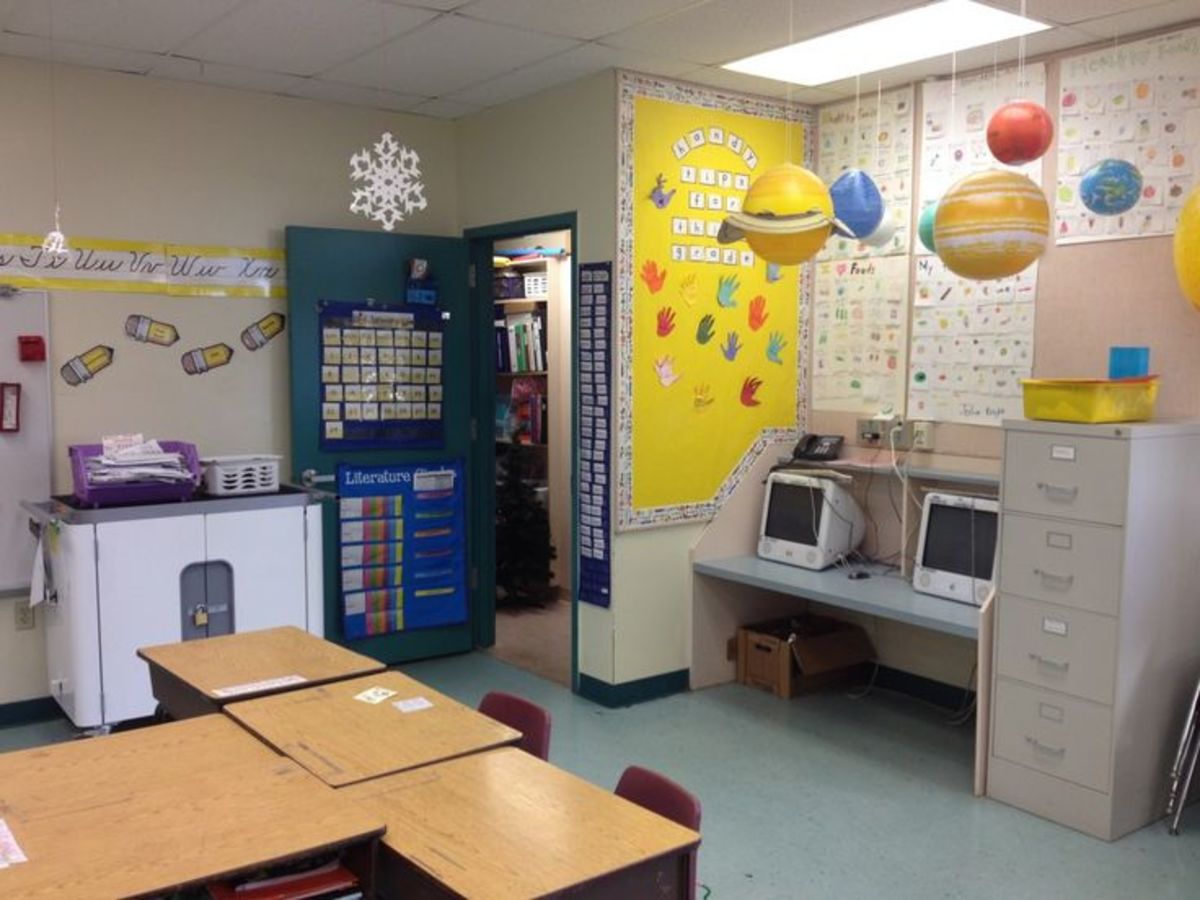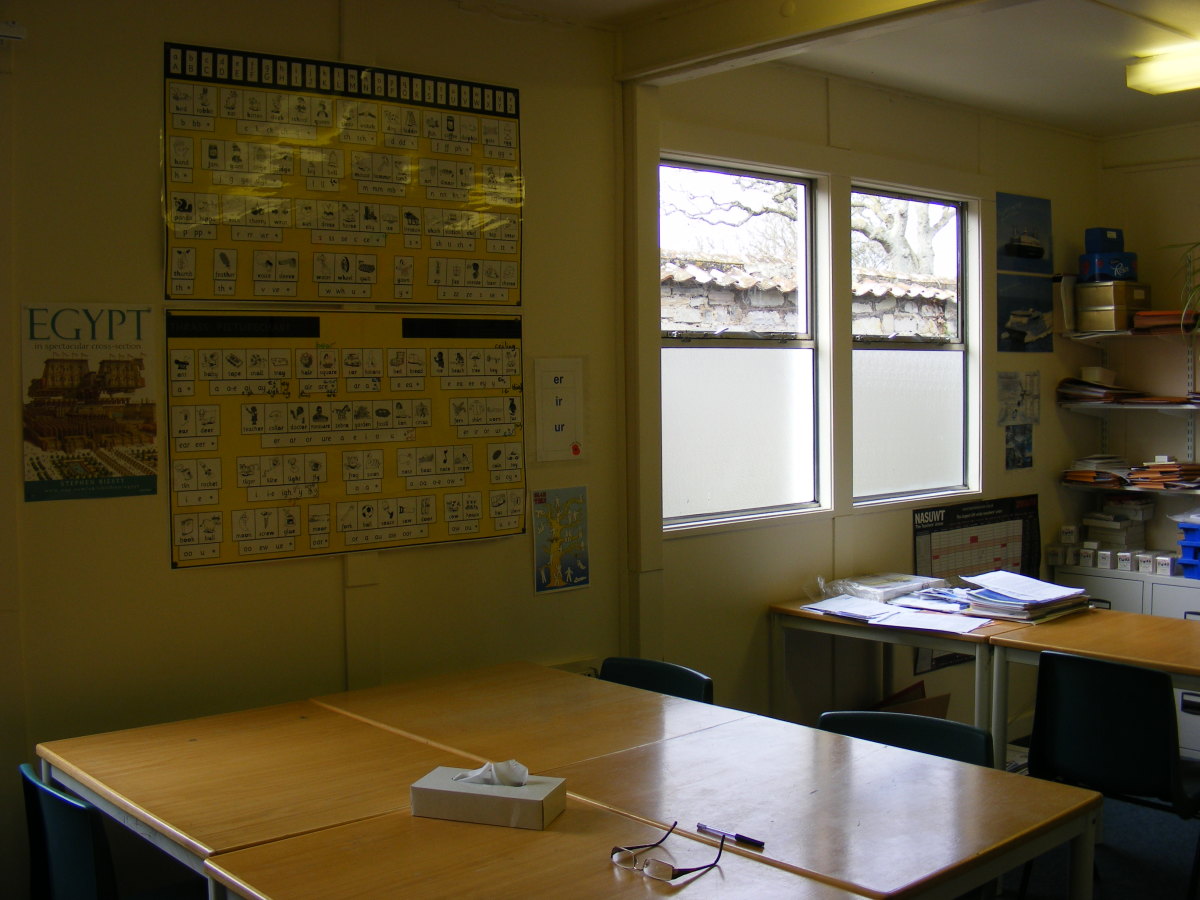Understanding Children With Disabilities
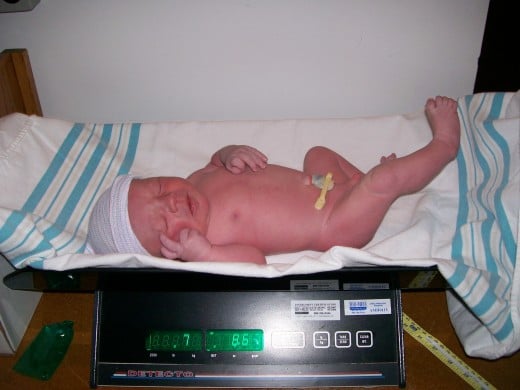
Who is This Child?
Who is this child beside me today, handing me flowers and smiling so gay? It hasn't been long since she was a babe, so tiny and helpless, a soul to save. How could I know what was in her heart, what thoughts of the eternal home from which she did part?
Who is this child with her arms around me, looking longingly in my eyes to see some deep pool of love from which she can drink, telling me secrets of what she does think. How can I teach her all she needs to know when even I don't know which way to go?
Who is this child singing songs so sweet, always wanting to have me entreat, always wanting a world that is just, always extending her soul in trust? How can I protect her from the cruel world yet teach her to keep righteous flags unfurled?
Who is this child kneeling down to pray, pleading her cause at the close of the day? She remembers every neighbor and friend and even those who did offend. How can I raise her to spiritual heights when she already exceeds my own meager sights?
Who is this child, Lord, that you've given me? I want so much to help her see. Yet inside my mind there seems a veil, while hers is parted, though she's already set sail! How can I guide her back to thee, when she's already living in eternity?
Do you have a child with a disability?
What is a disability?
According to the Americans with Disabilities Act, a disability is a physical or mental impairment that substantially limits one or more major life activities, such as breathing, walking, learning, or listening. Causes for disabilities are myriad. A few are listed below:
- Birth defects
- Genetic abnormalities
- Illness
- Accidents
- Trauma
- Natural disasters
- Chemical exposure
- Changes in personality or emotional state
Although children with disabilities are found in all races and economic circumstances, risk increases with poverty, drug/alchol use, and trauma. Incidence decreases with family education, high quality nutrition, and prevention of chemical exposure. Once disabilities are identified, however, the focus is on provision of services rather than determination of cause.
Physicians suspecting that an infant or toddler has a disability usually refer the parent to the county early childhood services. Self or relative referral is also encouraged. Services include provision of physical and occupational therapy, speech and language services, child care assistance, and parent education.
Equipment needed for the child may be loaned to the family, with upgrading to accommodate growth and development. These services are provided at no cost to the parents, being federally funded through the Individuals with Disabilities Education Act(IDEA).
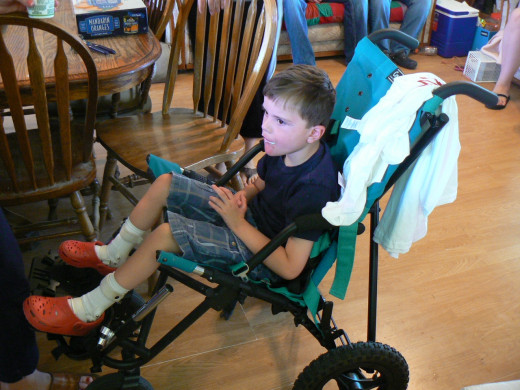
How are students with disabilities identified?
Delay in developmental milestones such as rolling over, cutting teeth, talking, crawling, and walking are usually the first signs that a disability may be present. Early childhood personnel track progress and provide intervention from birth through age 2 years 11 months. The family is the focus of all services, and parents are part of the team. They are taught how to work with the child, using various methods to help the child learn or develop the skills that are lacking. Once the child reaches the point that they appear to be developing normally, services are discontinued.
As a child nears the pre-school years, screenings are available through early childhood programs in an effort to identify children who need assistance before entering the public school system. These screenings check for language and cognitive development as well as the presence of physical skills such as hopping, skipping, jumping, and grasping. Children age 3 and older who are at-risk of having disabilities are referred for services through the local education association responsible for special education. IDEA Part B funds these services and they are provided at no cost to the family.
Once a child is in the public school system in kindergarten or above, education professionals, staff, and/or parents with concerns about school performance may refer a student to the school administration at any time in the student’s school career. The referral is given to the student assistance team (each school has its own terminology for the team, they may be called Teacher Assistance Team, Response to Intervention Team, or some other term). The team acknowledges the concerns and works with the parents and school personnel on research based interventions for the student.
Students who do not make sufficient progress when research based interventions are provided may be referred for additional assessment to see if they qualify for special education services. At this time, the parents partner with the student's teachers, school administration, and special education professionals to develop a plan whereby the student can experience growth in the school learning environment.
Category
| Cognitive
| Academic
| Physical
| Behavioral
| Adaptive
|
|---|---|---|---|---|---|
Autism
| varied
| low
| varied
| low
| low
|
Cognitive Impairment
| low
| low
| varied
| low
| low
|
Deaf-blindness
| high
| varied
| high
| high
| high
|
Deafness
| high
| varied
| high
| high
| high
|
Emotional Disturbance
| high
| varied
| high
| low
| varied
|
Hearing Impairment
| high
| varied
| high
| high
| high
|
Multiple Disabilities
| varied
| varied
| varied
| varied
| varied
|
Other Health Impairment
| high
| high
| high
| low
| varied
|
Orthopedic Impairment
| high
| varied
| varied
| high
| varied
|
Specific Learning Disability
| high
| varied
| high
| varied
| high
|
Speech or Language Impairment
| high
| varied
| high
| varied
| high
|
Traumatic Brain Injury
| varied
| varied
| varied
| varied
| varied
|
Visual Impairment
| high
| varied
| high
| high
| high
|
The thirteen disabilities categories in IDEA and how they are manifested in the classroom. Chart prepared by Denise W. Anderson from observations taken as a School Psychologist.
How do students with disabilities qualify for services?
The chart above shows the thirteen categories IDEA uses for the placement of students in special education. Qualification is based primarily on how the disability affects the student's functioning in the regular education environment. The qualitative descriptions given in the chart are indicative of the results shown in standardized testing, observation, or criterion referenced inventories:
- High - normal or above
- Low - below normal, or at-risk
- Varied - the score is high in some cases and low in others
Cognitive ability has to do with intellectual skills such as thinking, problem solving, categorizing, and memory. Academic deals with the ability to speak, read, write, and work with numbers. The Physical category is the motor movement of the body, whether intentional or unintentional. Behavioral affects the student's social and emotional functioning. Adaptive skills include taking care of one's self personally in the home, at school, and in the community.
For example, a child with cerebral palsy may be placed in the category of orthopedic impairment if the primary issue they are dealing with is mobility (a physical issue). The student may need assistance writing, eating, and moving from one place to another. Their programming would most likely include physical and occupational therapy, assistive technology, and adaptive physical education.
Another student with cerebral palsy may be functioning quite differently, having low cognitive and academic functioning, along with mobility difficulties. They may need physical and occupational therapy, language assistive technology, and basic skill development. This student might be placed in special education under the category of multiple disabilties as they would require adaptive equipment, a specialized classroom, and a one-on-one paraprofessional. Funding is determined by category placement and the provision of needed services.
Parents and educational professionals determine together the category placement and the Individual Education Plan (IEP) of the student. This plan contains the instructions the school personnel follow, including who, when, and how services will be provided. Students that are age 16 and older also receive transition services to aid them in preparing to exit high school and integrate into adult life in the community.
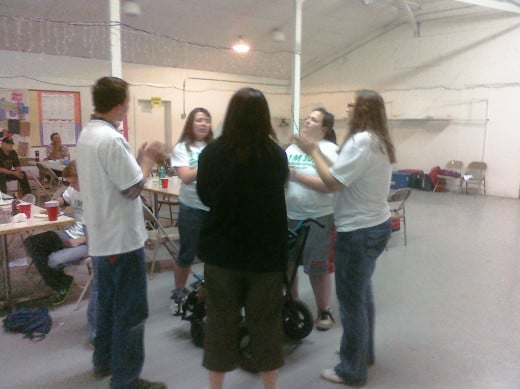
Provision of services within the classroom
Students with disabilities cannot be lumped into one particular area and expected to perform according to a set pattern. They are individuals, just like other students within the classroom. Each has strengths and weakness which may or may not be compounded by the disability. The purpose of special education is to level the playing field as much as possible for the student to experience success within the regular education environment.
Services are provided in such a way as to wrap around the student those supports and assistance that enable them to be successful in spite of their disability. Specialized instruction is provided in skill development and accommodations are given to assist with work completion and keeping pace with classmates. Additional tutoring, home-work assistance, and behavioral supports are provided both inside and out of the regular education classroom in order for the student to be involved with the same curriculum as their peers to the extent possible.
The question has been raised as to whether special education is a guarantee that the student will not fail. Unfortunately, that is not the case. Students sometimes make choices that result in school failure in spite of all the help that is given them. Special education departments struggle with this statistic just as much or more than regular education departments.
Federal laws require that interventions be on-going, even if a student is home or institution bound while in the special education system. In fact, a student cannot be inadvertantly exited once they are in special education. As long as they are considered qualified and available to school personnel, they will receive services. Efforts are made to keep the student in that position until evidence indicates that they are able to continue on their own without the support. Only a thorough assessment with average results will give that indication.
Students with disabilities are just like any other students, they are people. People with needs, wants, feelings, and aptitudes, who need love and caring. They need to know that the school personnel will be there for them in such a way that they are not belittled or discriminated against, but are strengthened, and uplifted. After all, we are all God's children!
This content is accurate and true to the best of the author’s knowledge and is not meant to substitute for formal and individualized advice from a qualified professional.
© 2012 Denise W Anderson


